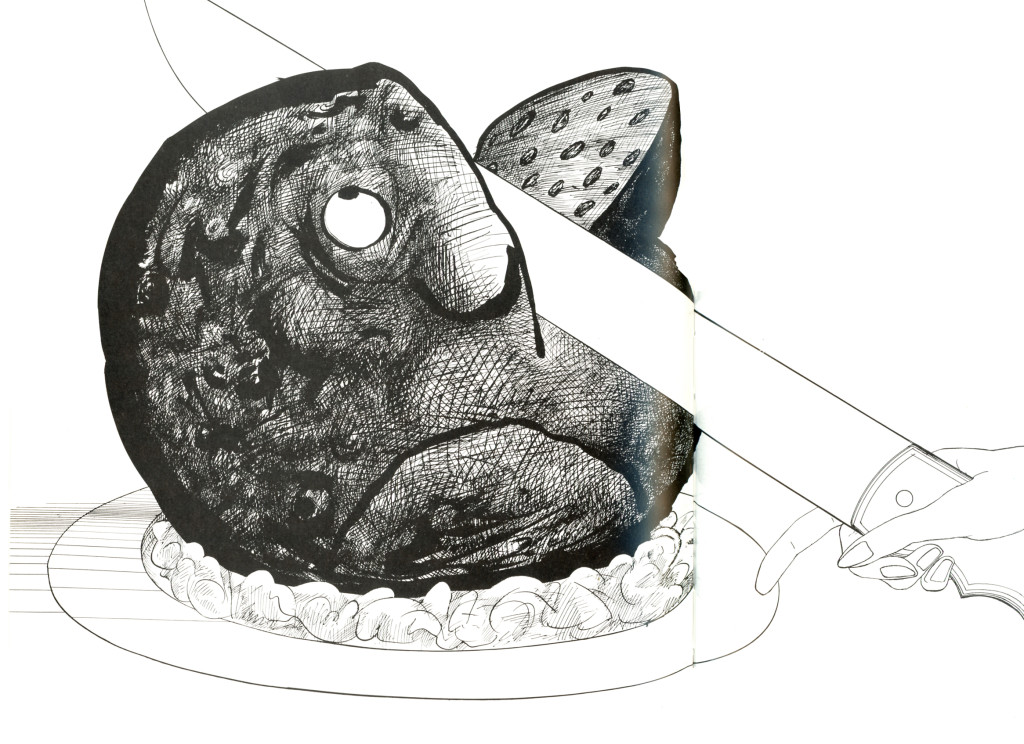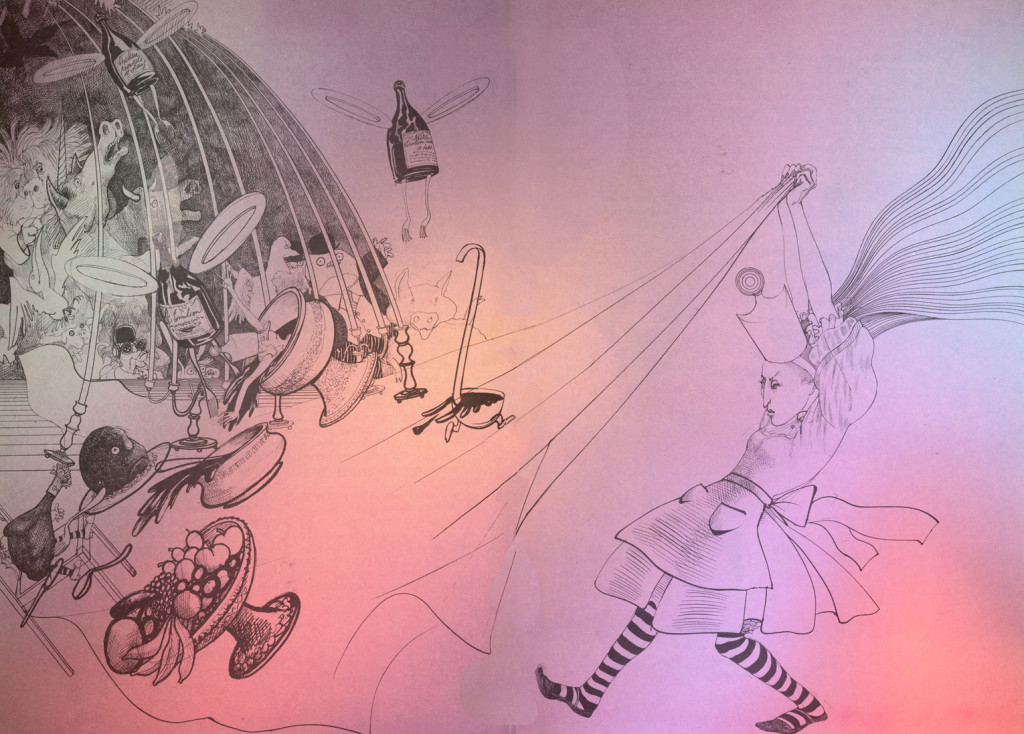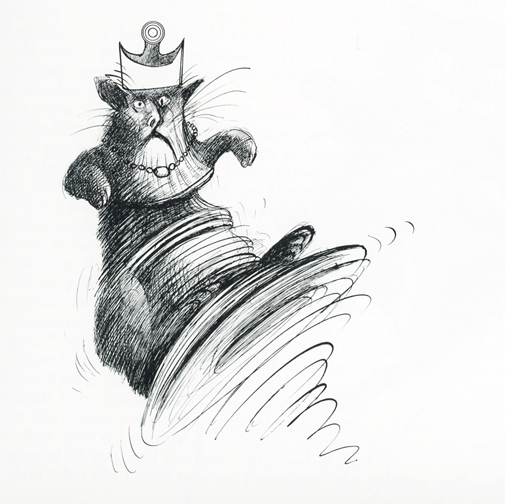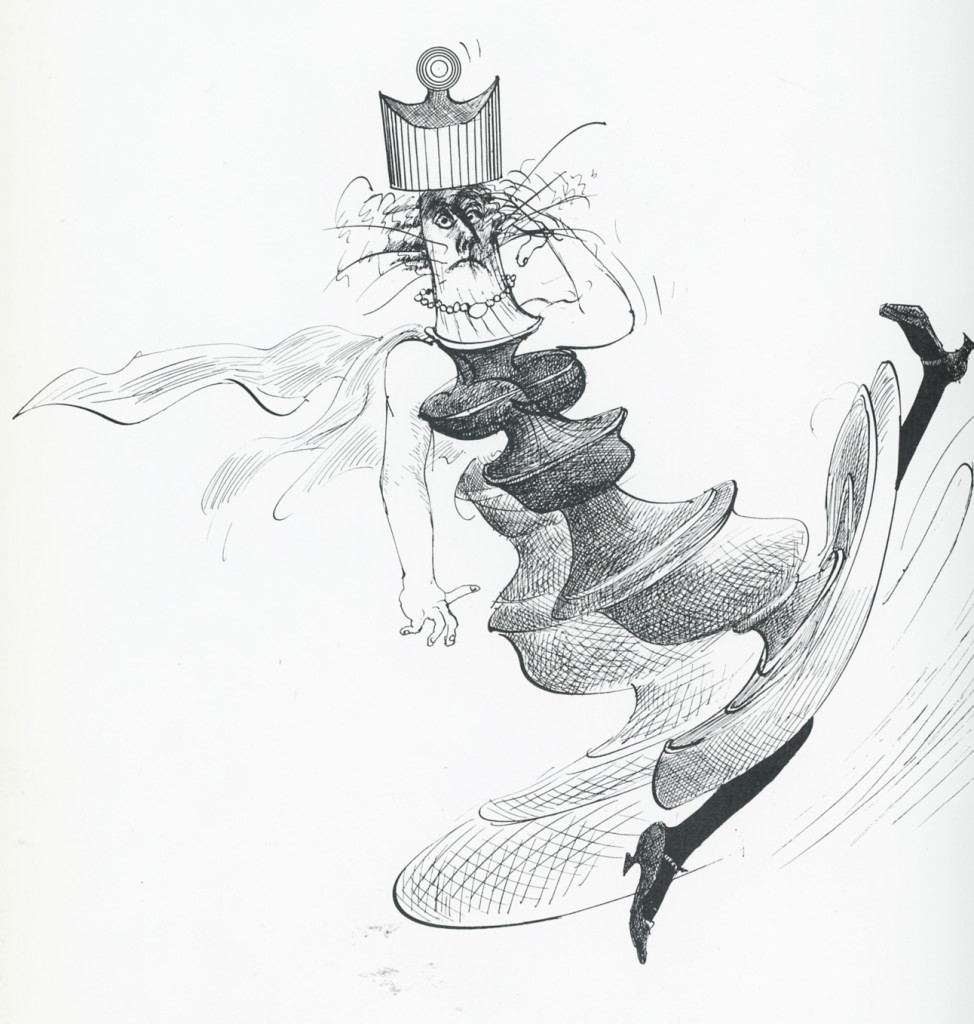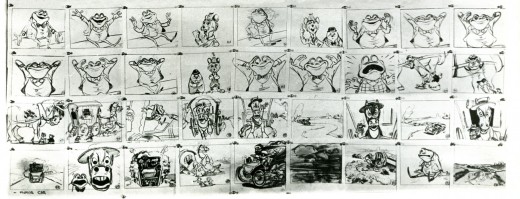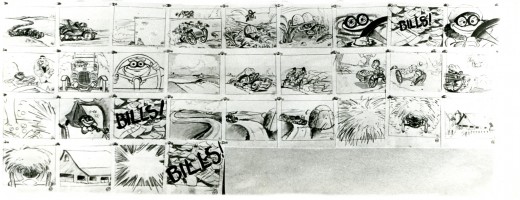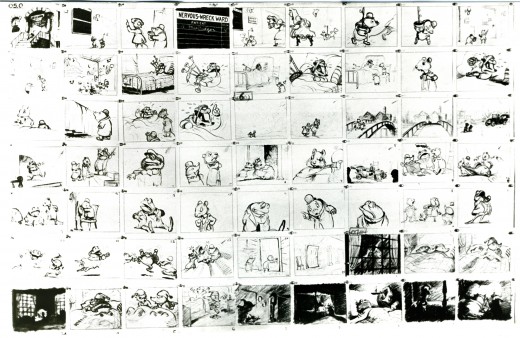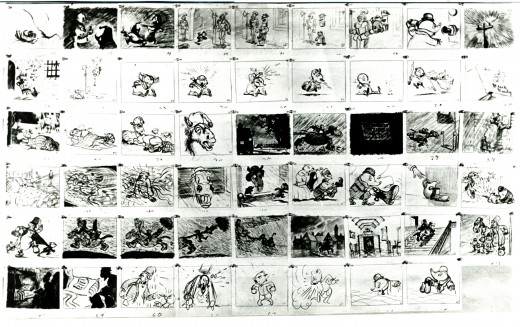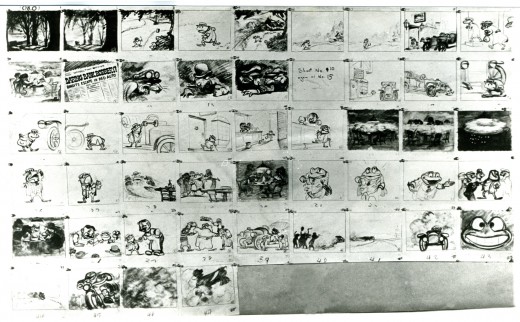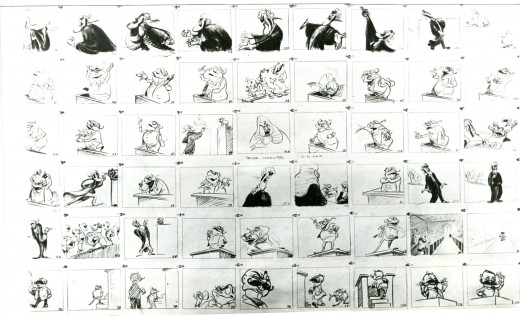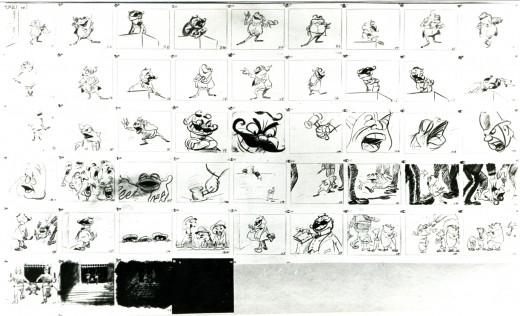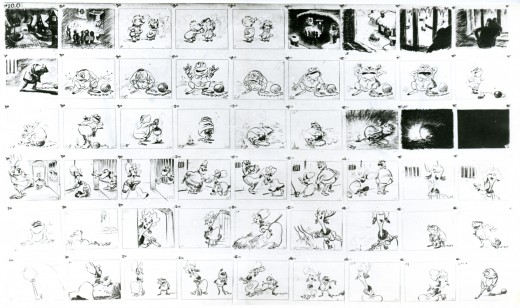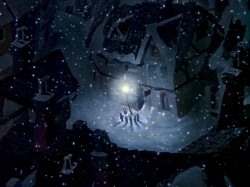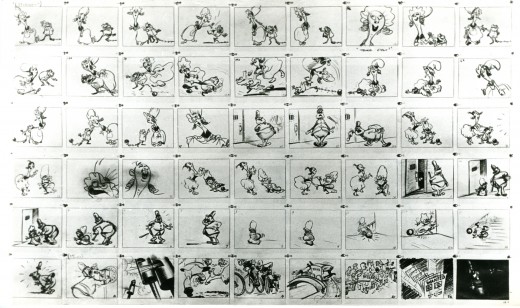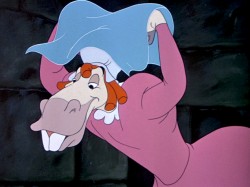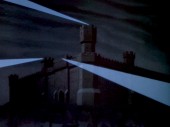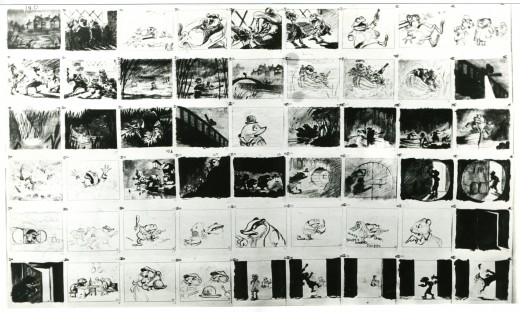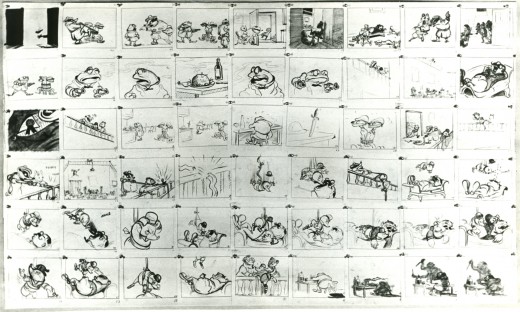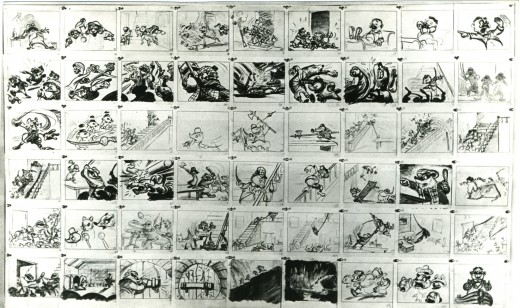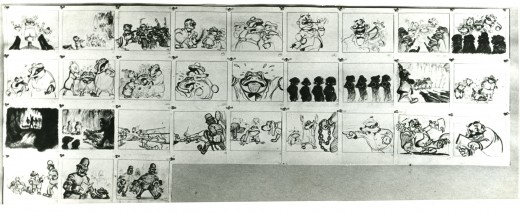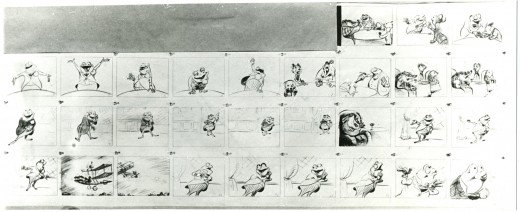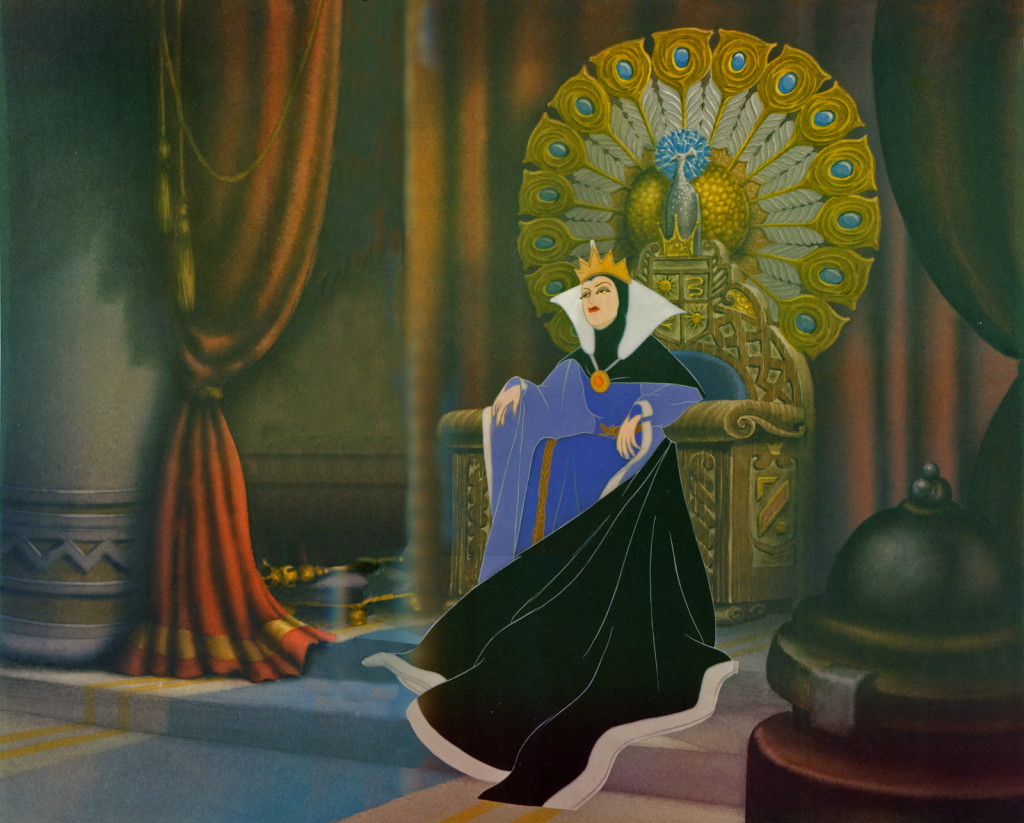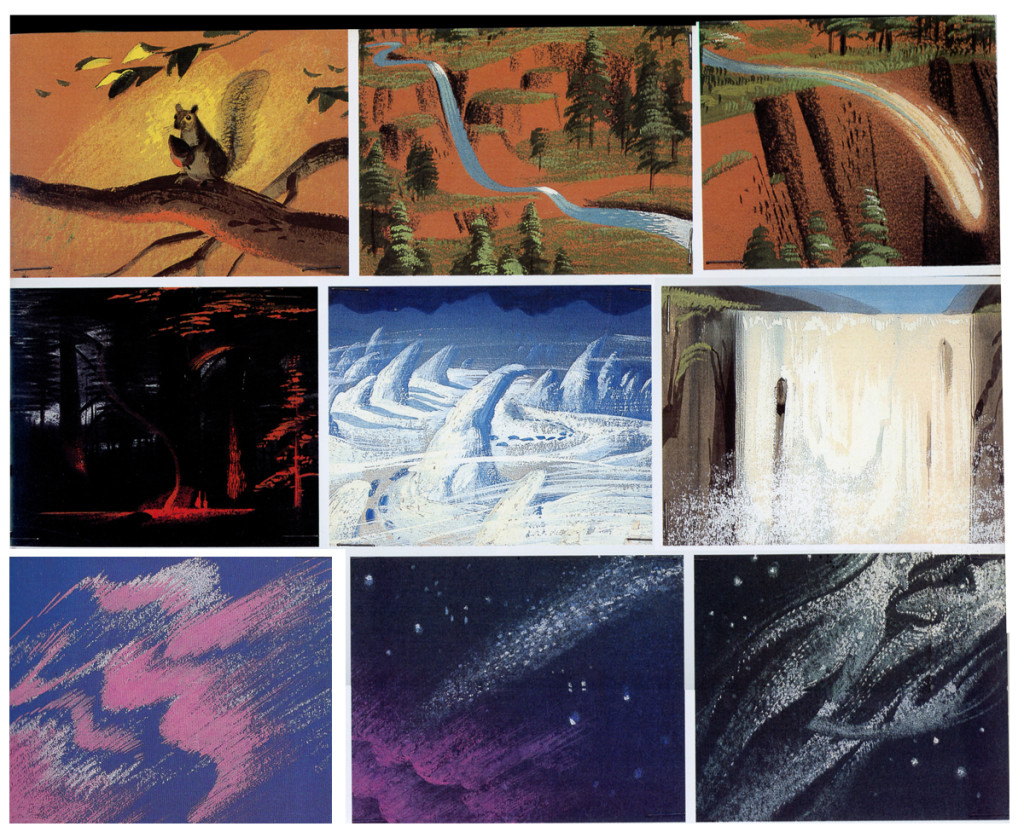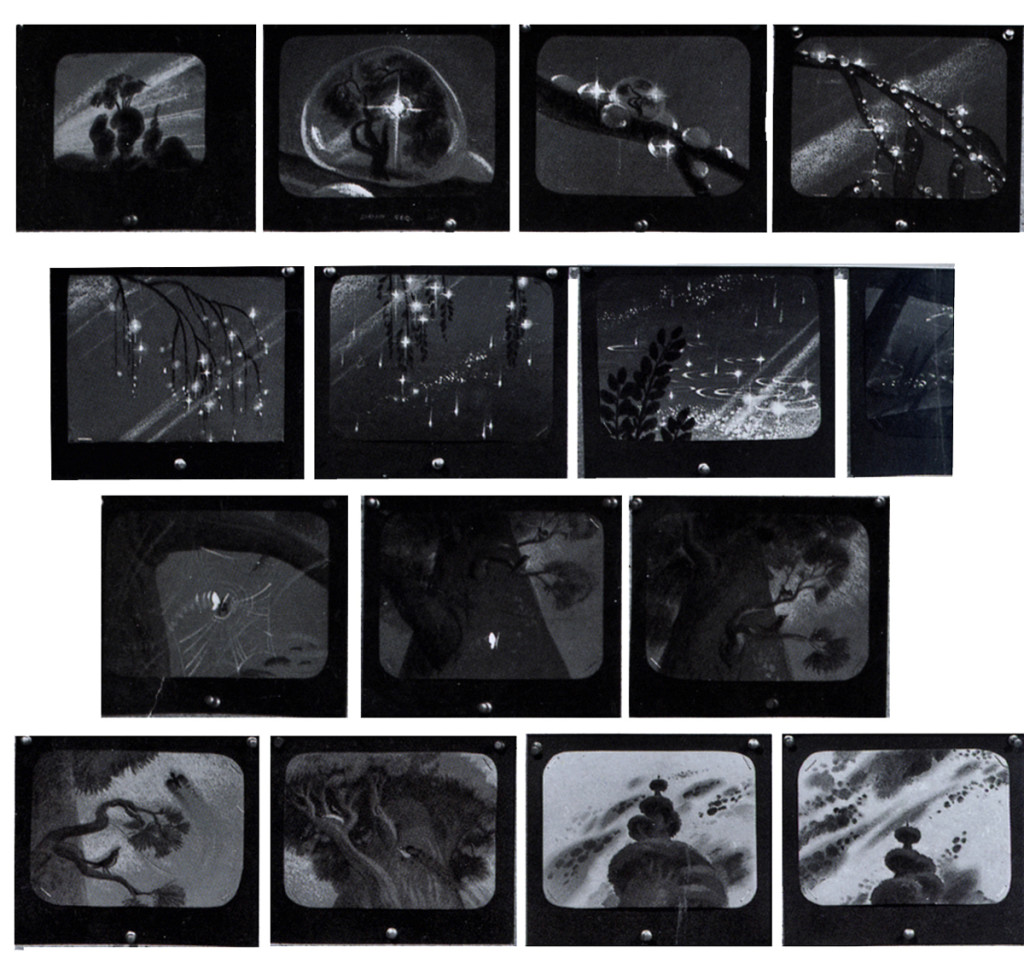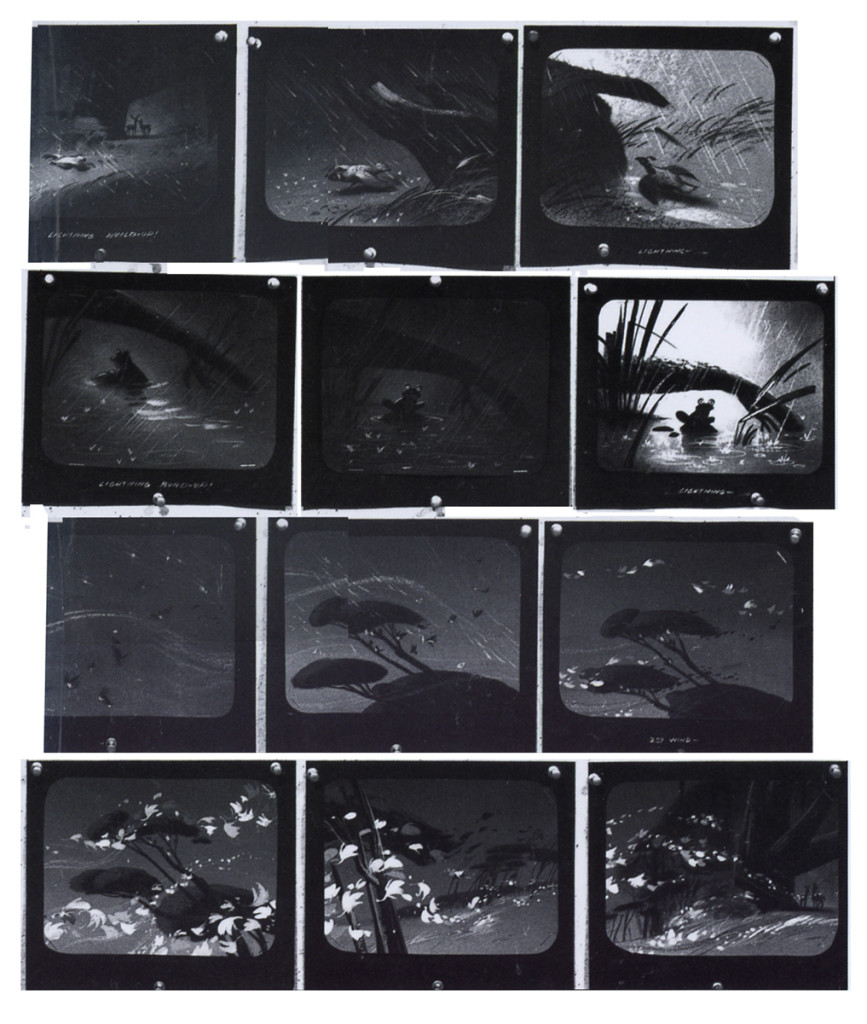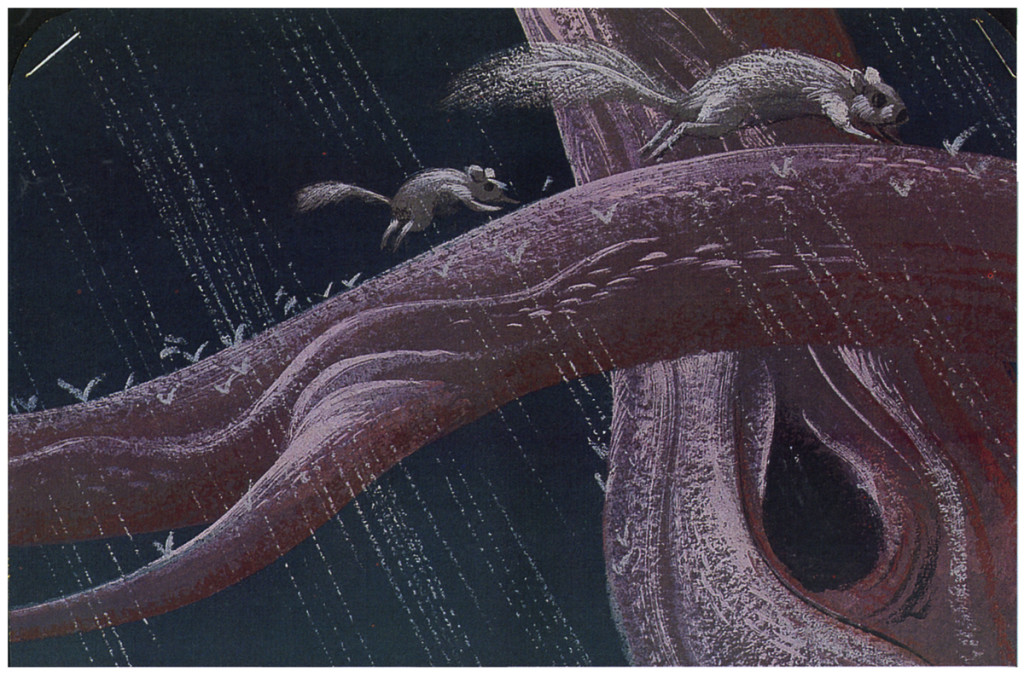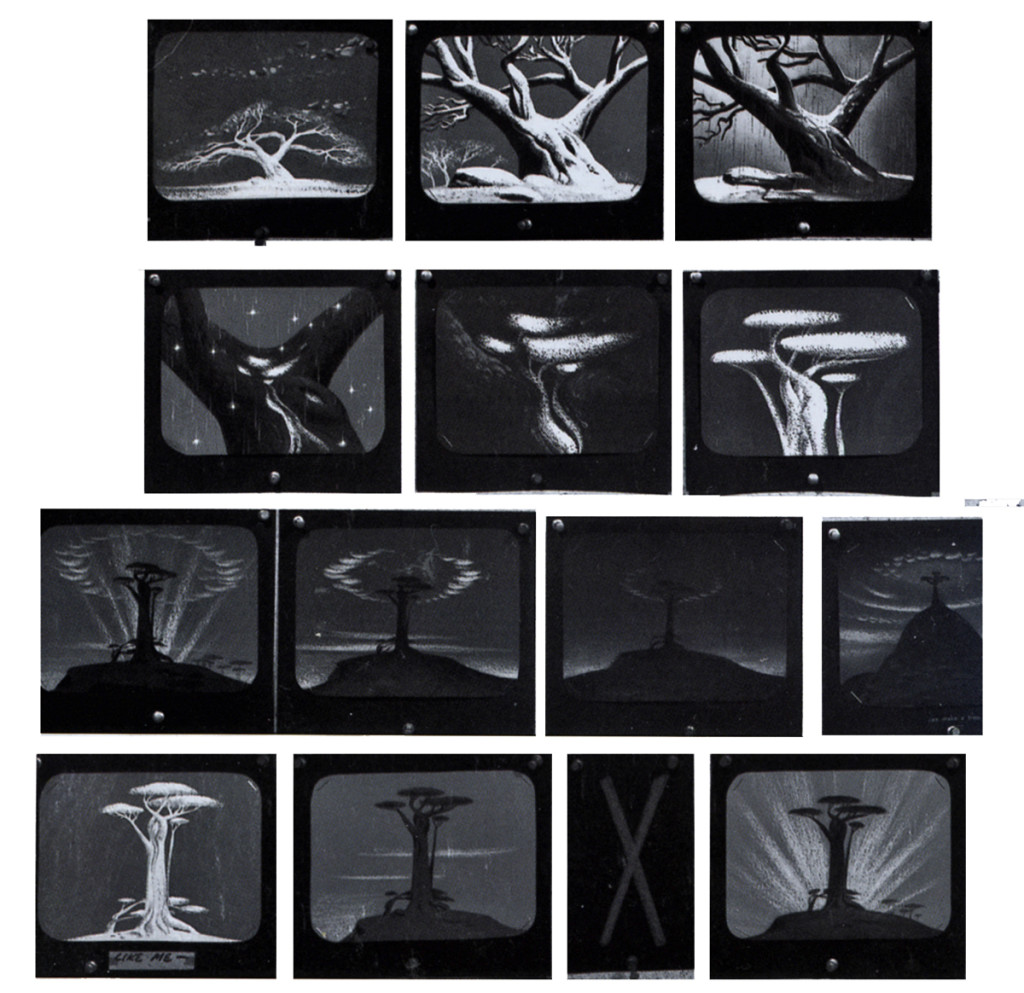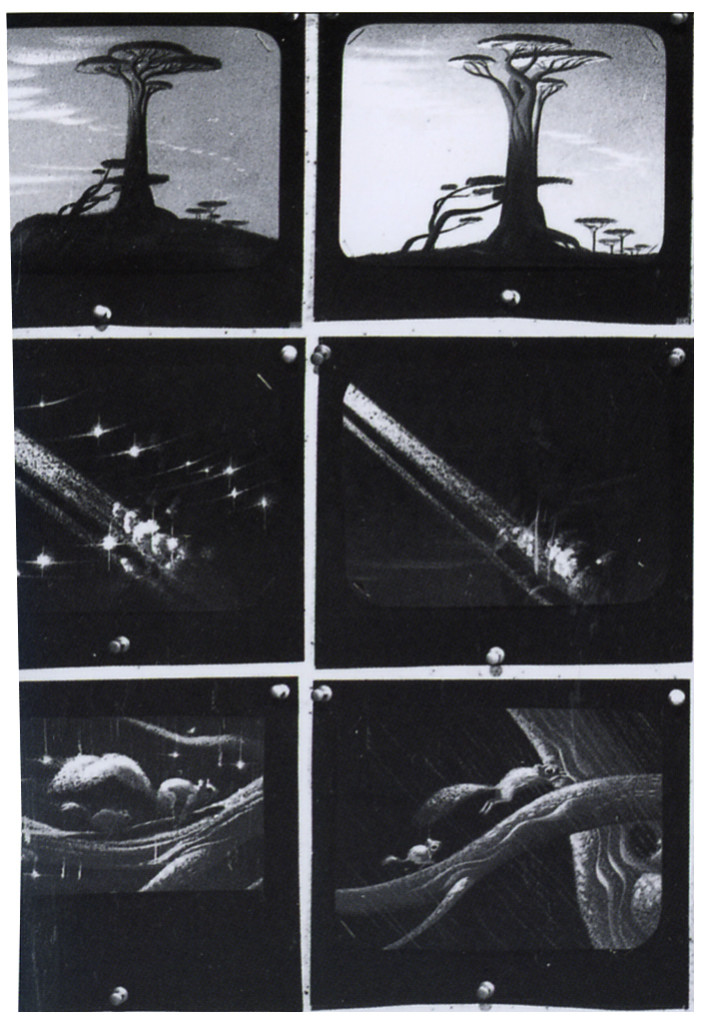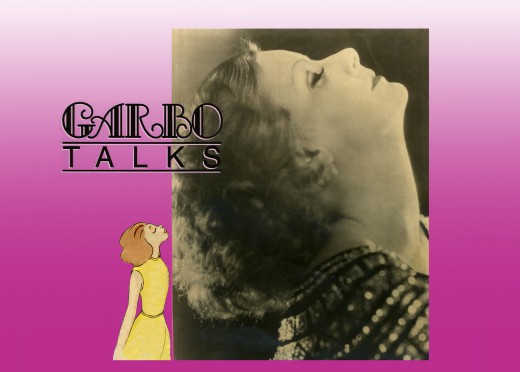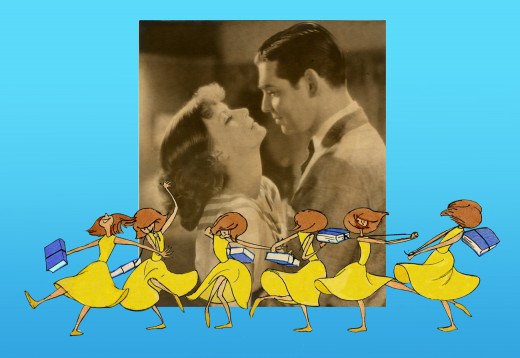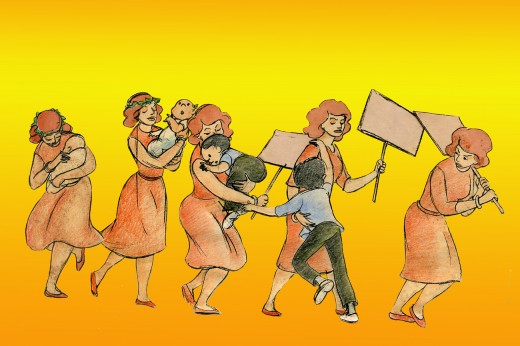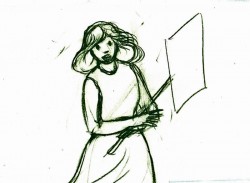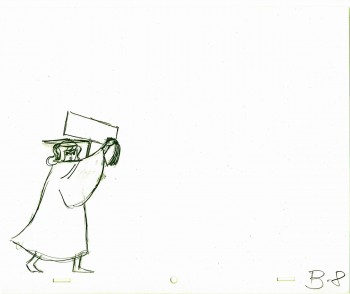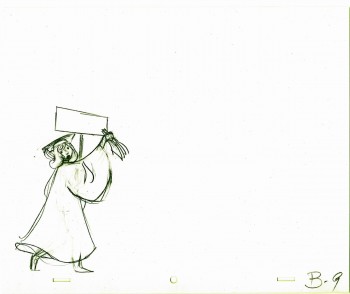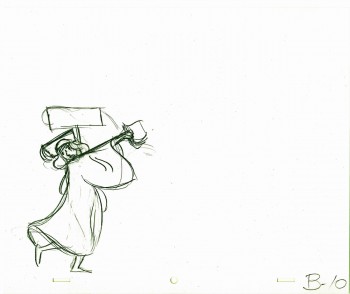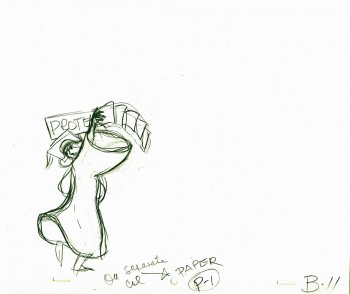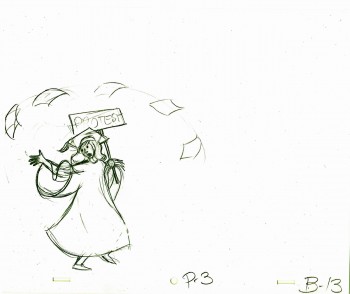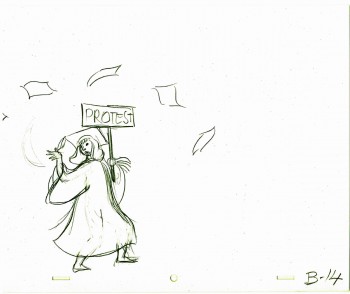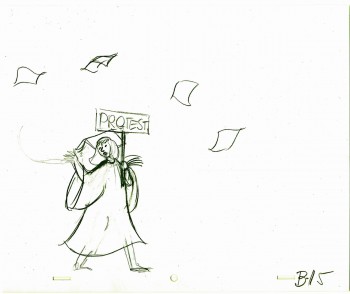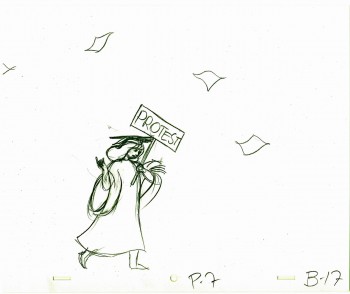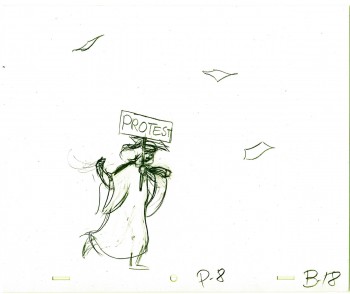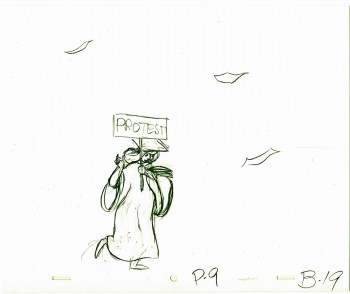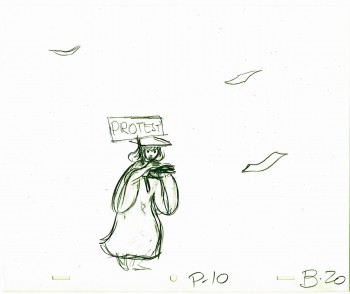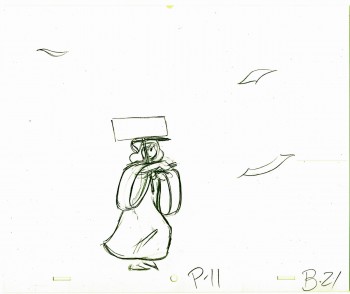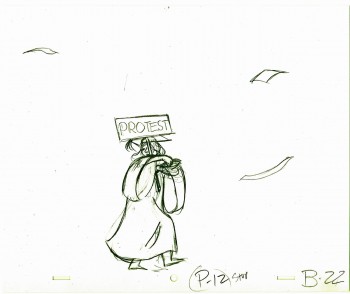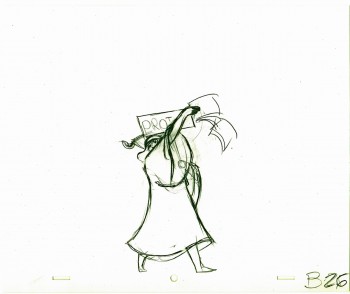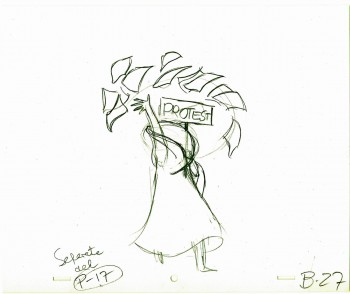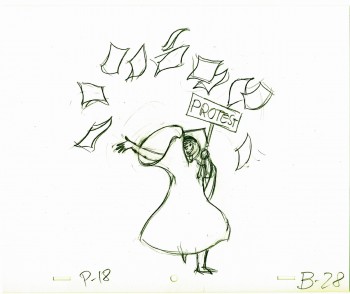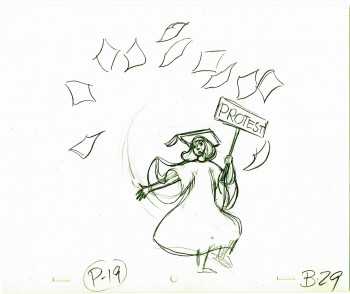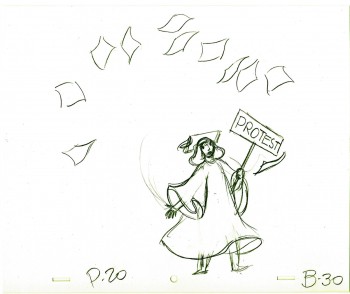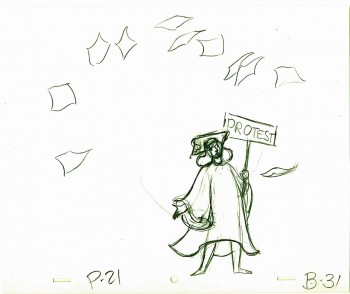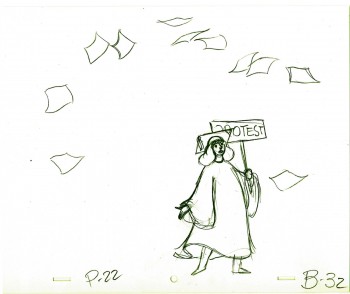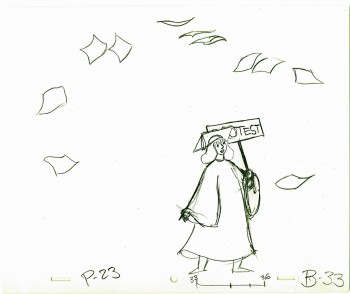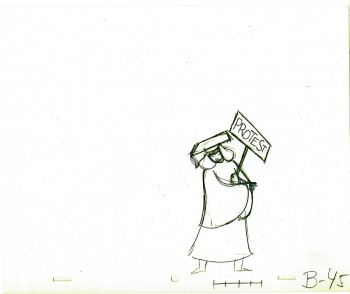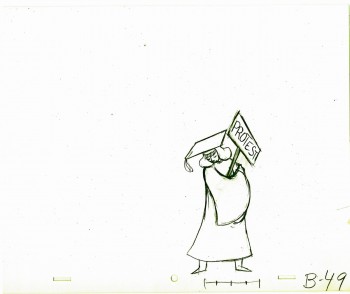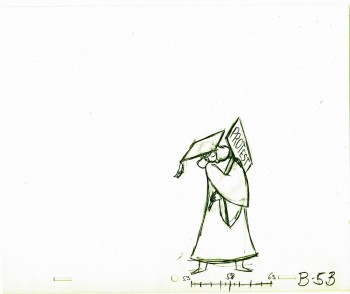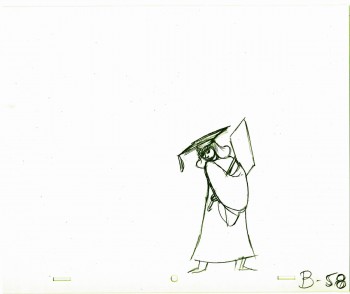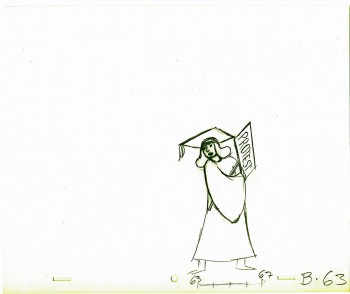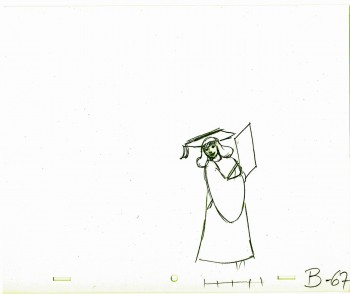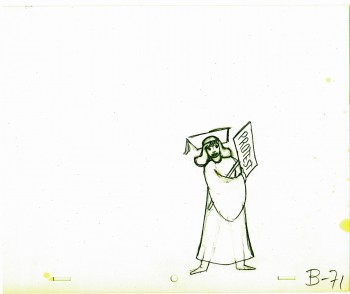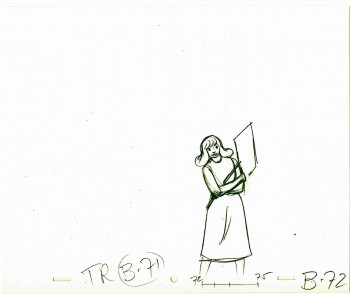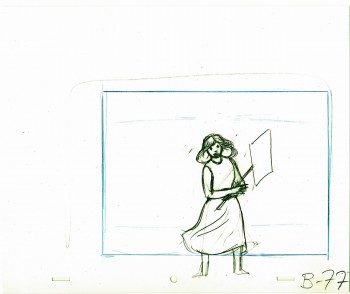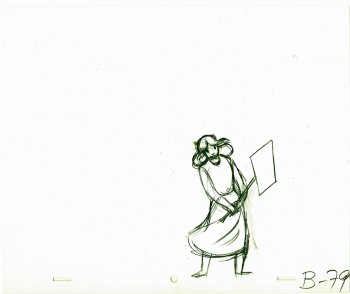Category ArchiveAnimation
Animation &Books &Disney &Illustration 09 Nov 2013 02:31 pm
Waking UP
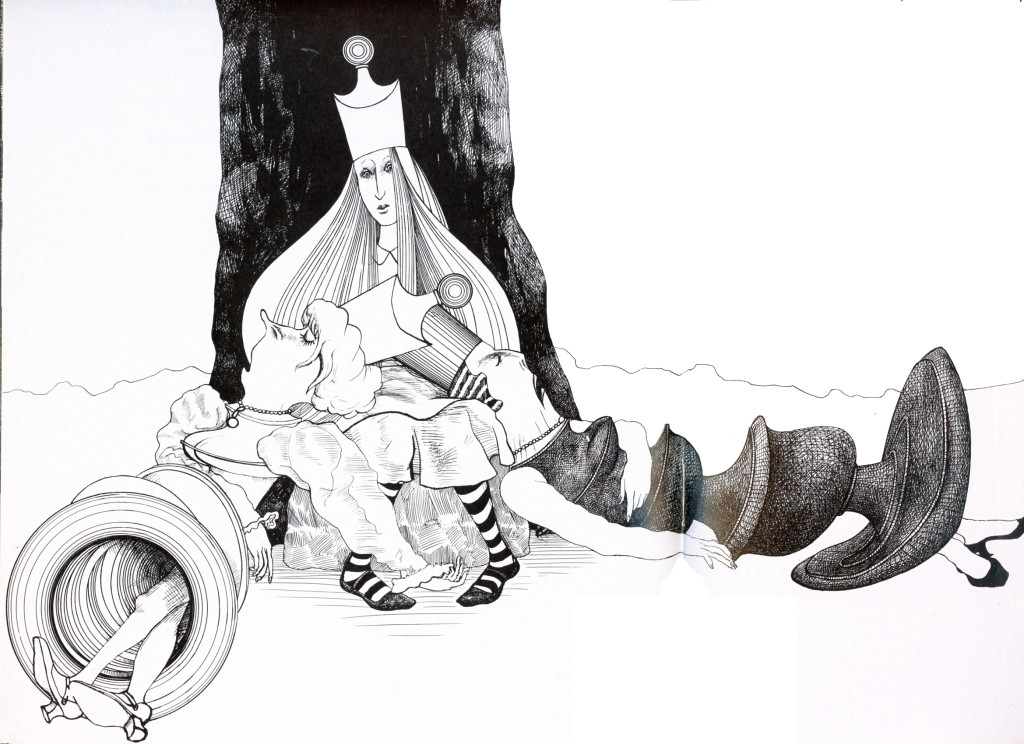 1
6
1
6I’m still Here by Tom Waite and Kahleen Brenan
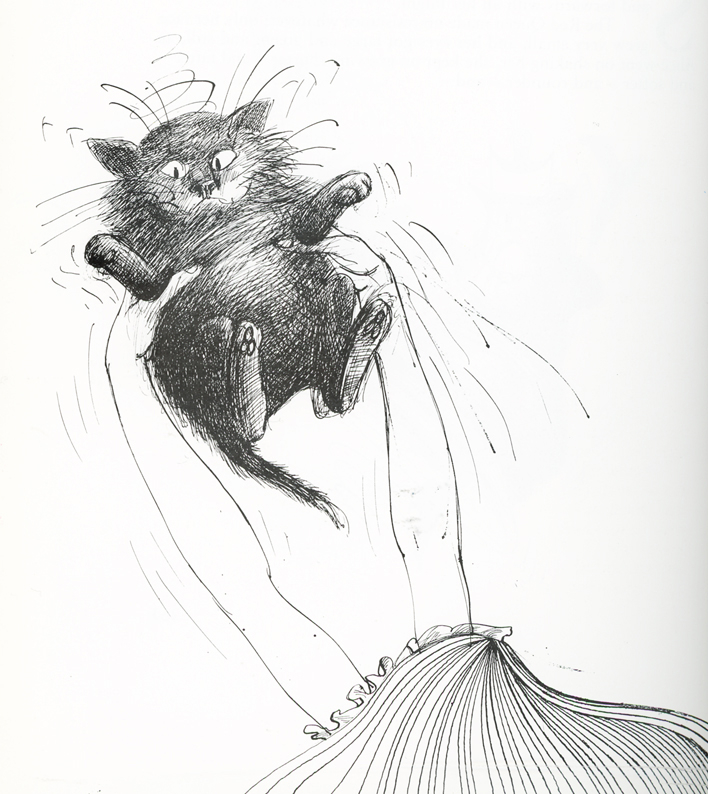 7
7
You haven’t looked that way in years you dreamed me up and left me here.
 8
8
How long was it you wanted me for you haven;t looked at me that way in years.
 9
9
Your watch has stopped and the pond is clear.
 10
10
Someone turn the lights back on I’ll love you til all time is gone
 11
11
You haven’t looked atr me that way in years.
 16
16
Song from Alice by Robert Wilson. Song by Tom Waite and Kathleen Brennan]
Action Analysis &Animation &Commentary &Disney &Guest writer 21 Oct 2013 06:13 am
Women and Men, Boys and Girls, & Toads and Horses
I can’t believe all this nonsense I’ve been reading about what Joanna Quinn might have said about this Disney film or that. She’s right and anyone who argues with her has to be a real dullard and a total fake. If she says it’s easy or hard to animate women, take her word for it. (Not just because she knows how to animate women better than anyone on the planet, these days, but because what she’s saying is common sense.
Women are people, too, not just insipid cartoon characters the way the Disney people draw them. If a male is easy to animate, it’s because they’ve figured out how to design them as the cartoons they’re making. If women are hard to animate, it’s  because the lead character in FROZEN looks like every other generic female these guys can draw. Give it up. Hire a few good women who can animate, and we’ll see what we see. (I expect nothing different unless the woman drawing the figure is a good animator (not just great, like Joanna Quinn) and knows how to draw well (not even great, as JQ can do). But the character they’re animating is well designed (unlike the lead in FROZEN).
because the lead character in FROZEN looks like every other generic female these guys can draw. Give it up. Hire a few good women who can animate, and we’ll see what we see. (I expect nothing different unless the woman drawing the figure is a good animator (not just great, like Joanna Quinn) and knows how to draw well (not even great, as JQ can do). But the character they’re animating is well designed (unlike the lead in FROZEN).
It reminds me of the in-house joke around the film METAMORPHOSIS. The principals didn’t have names, and the model sheets read: “Lead Boy” and “Lead Girl”. The animators usually read their names as “Led Boy” and “Led Girl” because they looked generic and they could only make them move like “lead.”
As long as we’re talking about drawing and designing and animating women let me repeat a segment of an older post. It includes storyboard from Disney’s The Adventures of Ichabod and Mr. Toad. Of course, the original of this was The Wind in the Willows by Kenneth Grahame.
My reason for repeating it has more than a touch upon Joanna Quinn’s fine comments. I received a letter from the great Borge Ring who pointed out who the artist was of this storyboard. An excerpt from his letter:
-
hi Michael
Re Give me a Drawing
Daan Jippes who worked on The Prince and the Pauper saw the storyboard of “The Wind in the Willows” and said:
“The story sketches of that opening sequence look exactly like the finished scene. How can they give an animator credit for something that has already been done ?”
The draft said the scenes were animated by Frank Thomas, and I asked Thomas:
“Frank,who drew the storyboard of the sequence?”
“I did – I am not sure I did much else”
greetings
from
Borge 92
PS
You mention Oscar Wilde
He is supposed to have said:
“Sexual gratification is so useful to us humans. Because it enables us to think
of other things too”
So here, then, is a bit of that storyboard – more from the end rather than the beginning.
Talented those men were (they could even draw men, a toad and a horse, dressed as women pretending to be women – with very little success.
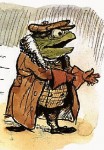 – Probably my favorite children’s book is The Wind In The Willows. There have been many animated adaptations of this book since it became a public domain item, but for years there was only one version, Disney’s Mr Toad half of The Adventures of Ichabod and Mr. Toad. The loudest most raucous parts of Kenneth Grahame’s delicate novel, blared their way onto this animated compilation feature.
– Probably my favorite children’s book is The Wind In The Willows. There have been many animated adaptations of this book since it became a public domain item, but for years there was only one version, Disney’s Mr Toad half of The Adventures of Ichabod and Mr. Toad. The loudest most raucous parts of Kenneth Grahame’s delicate novel, blared their way onto this animated compilation feature.
We all know that the book was planned as a feature way back when Disney, in the late 30s, was buying up titles of famous children’s books to prevent other competing studios from turning them into animated features. Work began on adapting the book. They never quite broke it as they hoped, and it ultimately became a featurette with its primary focus on the loose cannon, Mr. Toad.
. . . .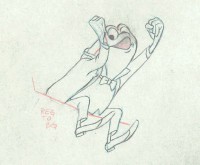 The film, as it exists now, has some positive elements and some fun animation, but the story was always a bit too quiet and British to successfully survive a proper adaptation in the Disney canon.
The film, as it exists now, has some positive elements and some fun animation, but the story was always a bit too quiet and British to successfully survive a proper adaptation in the Disney canon.
When John Canemaker loaned me his copy of the Pinocchio boards, he also brought The Wind In The Willows (not titled Mr. Toad). There are few captions here, but this obviously is designed for a full-out feature not an abbreviated featurette. The images on his original stats are small, so I’ve blown them up a bit and tried to marginally clean them up.
As suggested by Michael Barrier, this board was probably assembled to produce a preliminary Leika reel. The giveaway is the lack of dialogue and commentary underneath the drawings. The assembly was made to be photographed.
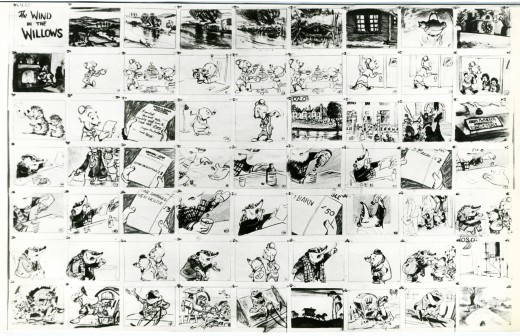 1
1(Click any image to enlarge.)
Disney’s Mr. Toad first aired on the Disneyland television program on February 2, 1955. You can buy the dvd of Ichabod and Mr. Toad on Amazon among other places.
If you’re interested you can read the entire book of Kenneth Grahame’s work (minus the beautiful Shepherd illustrations) here.
You can buy the book here.
Dave Unwin‘s version is my favorite adaptation in that it retains some of the flavor of the original book and isn’t afraid of being quiet at times.
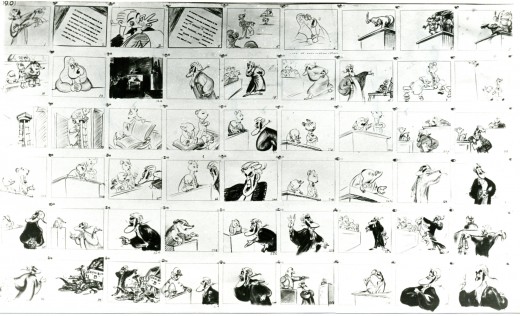 7
. .
7
. . 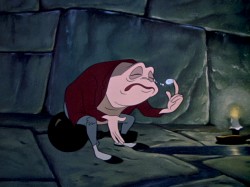
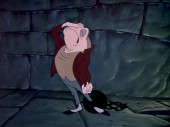
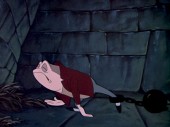
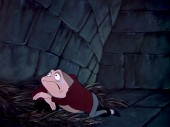 . .
. . 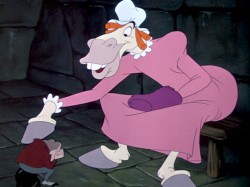
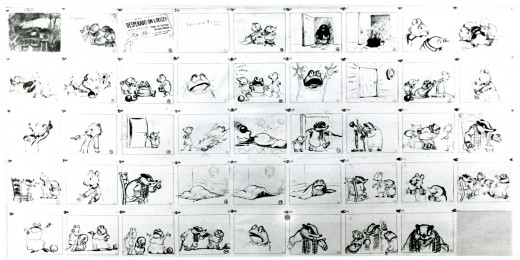 12
12
Animation &commercial animation &Illustration &John Canemaker 19 Sep 2013 01:05 am
John Canemaker’s Movies
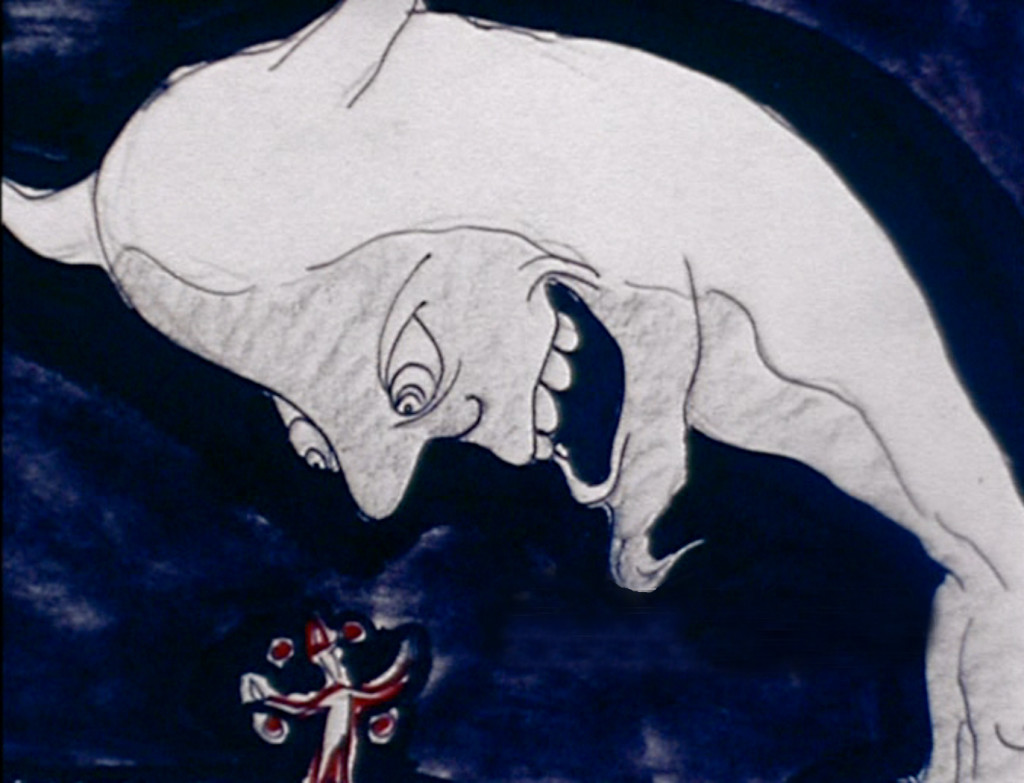 John Canemaker has been making animated movies for ever. I know because we both started at about the same time. Somewhere in the late Seventies we exchanged our early films to get a look at what each other was doing when we were younger. Leslie was tuning out a lot of footage imitating sequences I’d sen in the movies: a couple of dogs (certainly not Lady or Tramp) eating lunch, a limited animation vizier climbing pillars in imitation of 1001 Arabian Knight not with Mr. Magoo.
John Canemaker has been making animated movies for ever. I know because we both started at about the same time. Somewhere in the late Seventies we exchanged our early films to get a look at what each other was doing when we were younger. Leslie was tuning out a lot of footage imitating sequences I’d sen in the movies: a couple of dogs (certainly not Lady or Tramp) eating lunch, a limited animation vizier climbing pillars in imitation of 1001 Arabian Knight not with Mr. Magoo.
John didn’t do much in the way of limited animation; he told me he wasn’t able to figure it out. My own work was definitively derivative. I’d redone the Flintstones opening – my own version. Gay Purr-ee led to my attempt at animating the impressionists. I saw something in a theater or on TV and would immediately immitate it. I did a lot of live action/animation combinations. I was fascinated by the modern work. Title sequences to Saul Bass’ films led to my versions. Once I’d seen UPA – the Gerald McBoing Boing Show, I did my own variant. There was a comedy album called The First Family.Vaughn Meador and other comedians impersonated the First family – the Kennedys – singing song parodies of the time. I did my parody of these sung-through albums that quickly lost synch. But you could see the effort that had been taken.
Whereas John worked only in 2D cel animation, I brought out lots of other wares. Clay was easy to animate and allowed me to turn out footage fast.
When we screened them for each other, we were both impressed even though we had to trade off the films and watch them privately. We both did great work; we both did horrible work. My father and brother-in-law constructed a multiplane set with about 16 levels of glass (easily 18″x24″) with about 8000 watts of light. I had my take on Fantasia to work out.
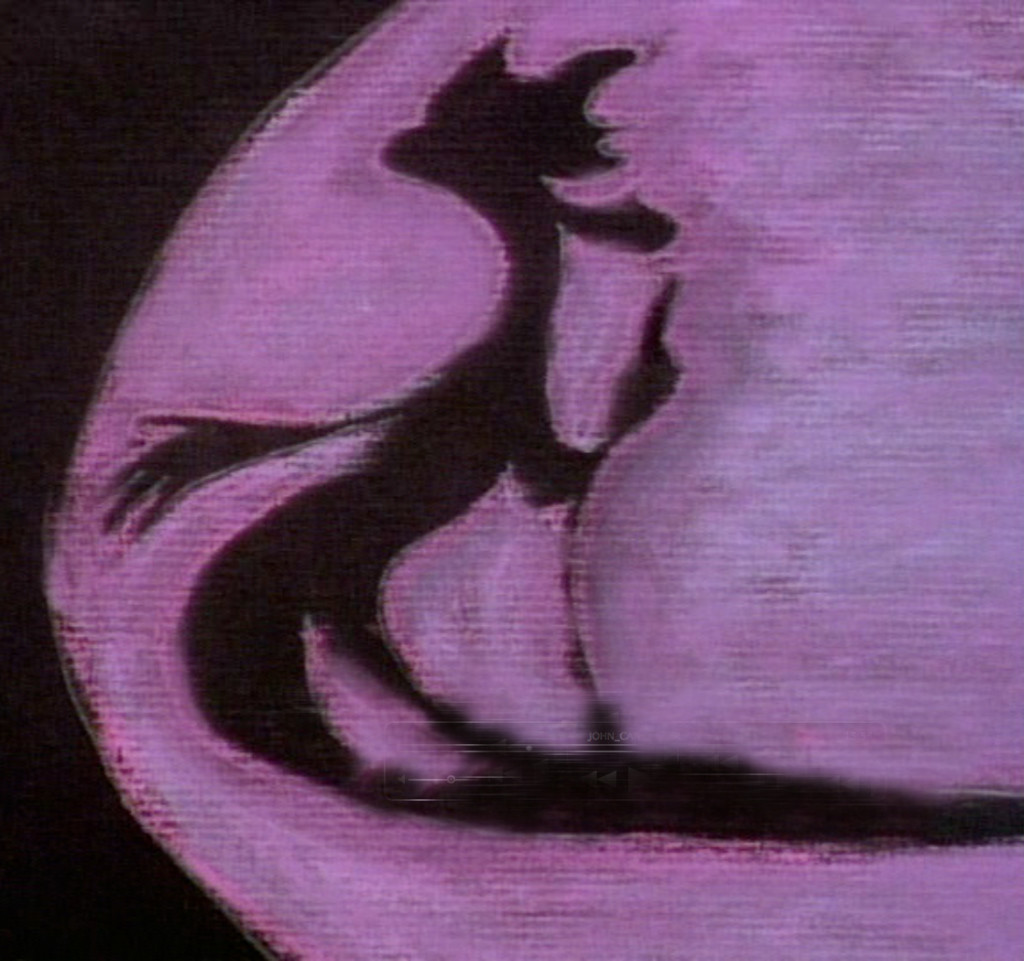 John’s early films – not those we’d shared with each other, but his more professional work – now have a DVD all their own, and I’d
John’s early films – not those we’d shared with each other, but his more professional work – now have a DVD all their own, and I’d
like to talk about these pieces. The DVD, John Canemaker – Marching to a Different Toon will permanently act as a good sampling of one artist’s view of the world. It presents a multiplicity of styles with a wide range of subject matter.
Bottom’s Dream feels like a sketch out of Fantasia as we see a short piece derived from Shakespeare’s “Midsummer’s Night Dream.” Once Titania has turned Bottom into an ass there is a dance wherein he’s trying to escape from the curse. Composer, Ross Care brings Mendelsohn’s music to life as the film’s backdrop.
Confessions of a Star Dreamer features the actress, Diane Gardner, expressing the problems and joys of becoming an Actress. Confessions of a Comic did the same for an aspiring young stand-up comic. Several sequences froom some of the excellent documentaries are also incuded:Break the Silence: Kids Against Child Abuse (TV Movie documentary) (animator), 1988 You Don’t Have to Die (Documentary short), The World According to Garp’s animated seqeunces are also included.
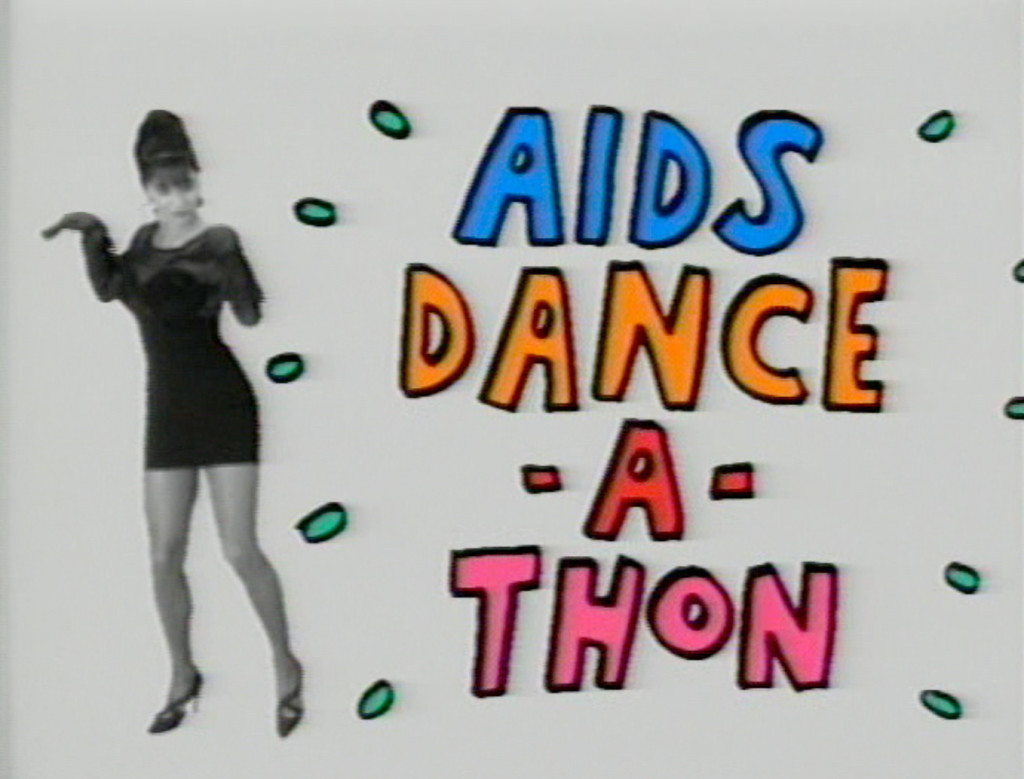 I love the short Bridgehampton, which animates the beautiful garden John and his companion Joe Kennedy, hae developed over the years (see some photos of the actual garden here.) It’s a wonderful little spot on the earth and how joyful for John to make a film paying tribute to his own little bit of nature.
I love the short Bridgehampton, which animates the beautiful garden John and his companion Joe Kennedy, hae developed over the years (see some photos of the actual garden here.) It’s a wonderful little spot on the earth and how joyful for John to make a film paying tribute to his own little bit of nature.
These films were all done just prior to John’s Oscar winning short, The Moon and the Son: An Imagined Conversation, which is featured on its own DVD.
This is a rare collection of shorts and one you’ll enjoy if you want to know more about the fame animation historian/animator.
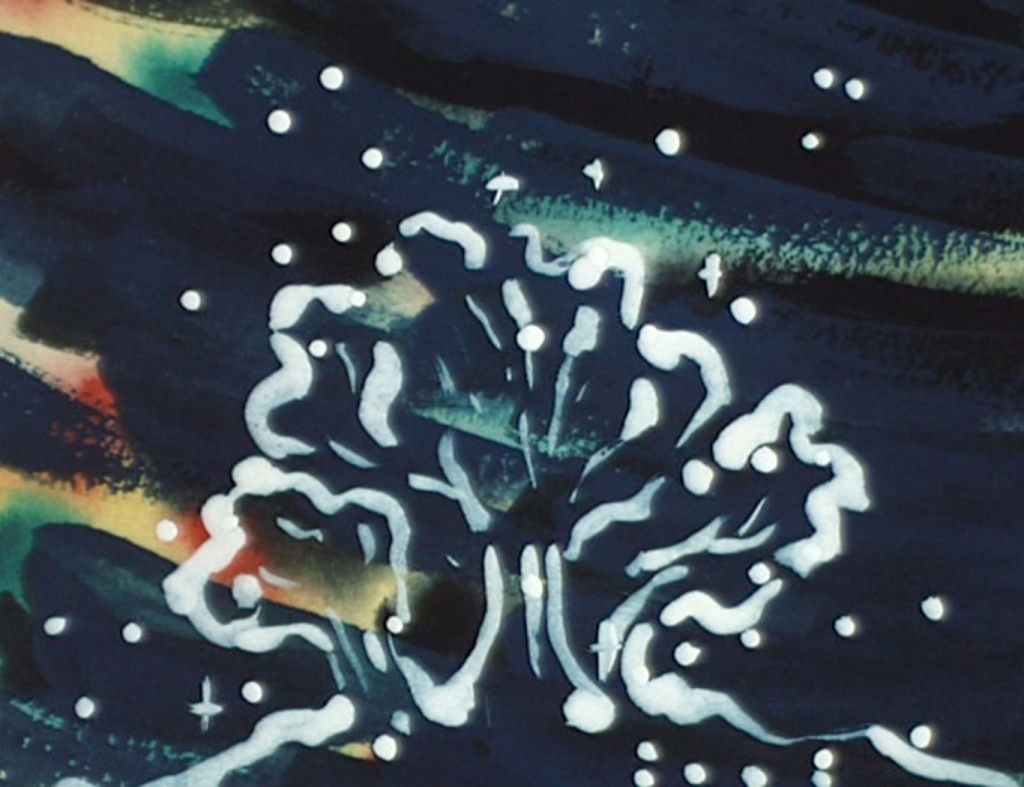
Action Analysis &Animation &Disney &Music 11 Sep 2013 02:24 am
Noble Touches
When Maurice Noble first started in animation he went, of course, to Mecca, The Disney Studios, where he made a name for himself. He was a Bg painter there. Two of his more noted pieces included the seat for the Queen. Included in the designs was the signs of the Zodiac. This, of course, was a well know feature for the signs of the Dark Forces. Well known author, John Gardner, himself a specialist in medieval history and Art, included 12 chapters in his novel, Grendel, a retelling of the Beowulf story. It’s a classic edition of the story as told by the monster, Grendel, himself.
Two of the illustrations of the Queen’s chair are pictured below:
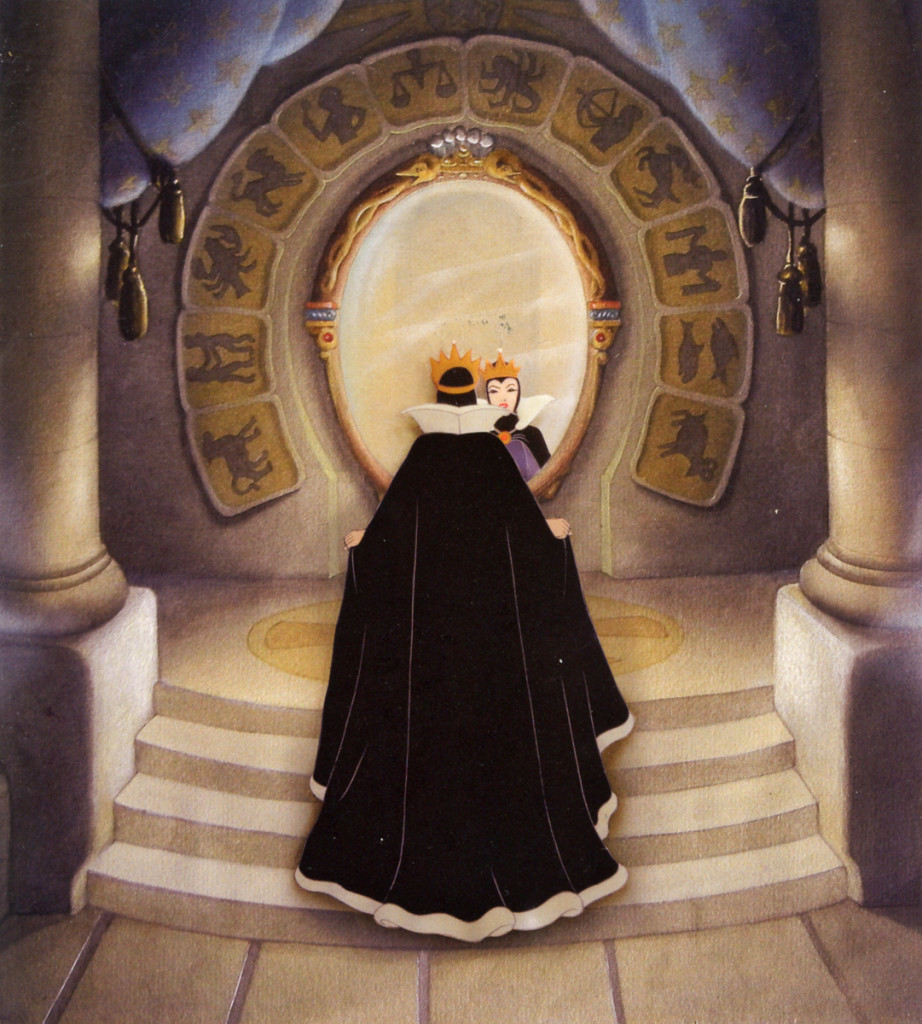 1
1
Animation &Animation Artifacts &Art Art &Miyazaki 04 Sep 2013 07:05 pm
Holes
We’re still in a fight-down with Verizon and our work isn’t getting there. Hopefully it’ll finally be resolved by Friaday, so don’t be wurprised is anoternpost is missing.
It was good to read Mark Mayerson’s article on Monday night. I was sure Hayao Miyazaki was planning to retire, so it felt positive knowing what was to happen. After the last few threats, it was somewhat expected. He did everything he could to line up Goro, his son, to take charge of one wing of the films in production. Now he can entertain the idea of running the studio’s production.
Given that The Wind Rising, Hayao’s most recent film, is doing well on the Festival circuit, the elder Miyazaki can go out with å bÃ¥ng. The film’s also reaped very high grosses within Japan and seems †o be doing well at the Box Office,
The hard part is actually knowing he won’t do more films. When you have someone of his caliber consistently turning out special work, it’s a shame to see that product get lost.
Mark Mayerson had a nice analogy comparing John FOrd to animation. Once such a master stops working the vacuum left behind them is enormous. A space is left open, missing and ¨if left open and not-filled it surely becomes a hole in †he arc of the medium, it’s noticeably missing.
There’s certainly nothing in the world of cgi feature animation that compares. Everything on the market in the last year was so wholly vapid
we can only hope a surprise will take over for the younger artists and give a direction forward. Miyazaki will be missed in the world – he already is. There will be no other like him. At least we know he’s alive and kicking so we can aontinue to honor him and his creatopns.
Animation &Animation Artifacts &Commentary &Illustration &Independent Animation 31 Aug 2013 08:27 am
Getting Old
You see the problem is that when you get older, priorities change. Take a look at Mike Barrier‘s blog. He knows what’s important amd surely it’s the ghsts of the past. Yes, we want to know who did what and when and where, and we move heaven and earth to get that part right. For the most part it is.
Then you have to look for and preserve those beautiful drawings of our youth. We get all the help we can, and we get it right. But there’s still so damned much work to do.
I’ve been digging into the archives, and lord knows most people aren’t ready to admit they’ve already viewed these drawings a half dozen times before. It’s not like saving Savannah or moving some extraordinary pictures. So they were moved on, then 0n again, before being devoured,
I love this work; I love animating it even more. When some semblance of life shows up in those drawings.
Getting older means it’s harder to get the point across. The message engines more seriously, and people all about watch for the brim of your head. They want to see you, too, so you’re on display like as not. The cartoon you planned has turned into some kind of “Art” and you try harder.
Then you really get tired. But you go on,god bless you. You try hard.
Animation &Commentary &Daily post 29 Aug 2013 01:47 am
I can’t tell you how pleased I am to have received the biography of master designer, Maurice Noble by author, Tod Polson. The book has been one I’ve anticipated of for quite some time. I must admit a bit of disappointment in the number of illustrations throughout, but there’s still plenty there to write about, and I will take two posts combined to review this important book.
Late Nite Mystery
While in the hospital a week ago, I didn’t sleep very much. One channel in NYC, CBS, has been replaced by Time Warner and they’re predominantly showing older children’s fare late night. A number of the Pixar features including Cars, A Bug’s Story and a few other unimportant pieces were shown along with several independently produced odd films.
Only one feature really stood out for me. It looked like a Mexican version of Alice in Wonderland almost as though it were drawn by Bunuel and combined with some eccentric live action. It blended very eccentric cg animation with live action, and 2d art that was beautifully drawn and felt purely original. At one point a screen full of characters that looked as though they’d been drawn by the early Picasso, moved across the frame. The black line art was almost blown out by the overexposed whites, and it certainly was purposefully done.
Small groups of simply dressed people move through the screen, and they all looked like poor Mexicans.
I’ve searched to find the title of the movie, but haven’t had any luck. I’m sure it had a French title. If this sounds at all familiar, let me know. I’d like to own a copy and would like to write more coherently about the movie.
Almond Milk
I’ve really taken to a couple of simply drawn animated spots by Blacklist / Studio AKA. The art directors are: Lindsey Butterwick, Danica Conneely, and Michael Fiore. The spot seems to be be cgi trying to cover the look of 2D animation, and they’re very successful, to me. Gently composed commercials that always feel positive and happy.
They also seem to there no matter what channel you turn to.
Animation &Animation Artifacts 28 Aug 2013 06:14 am
Only God Can Make a Tree
Given the holiday celebration of Martin Luther Kings’ elloquent statement re this subject, I’ve opted to post these images from Dick Kelsey. Richard Kelsey was one of those visual poets of the Disney studio. He’d probably have been the only one who could successfully tackle Joyce Kilmer‘s poem, Trees. He also brought Hiawatha to life with his strong beautiful watercolor and in sketches. (Needless to say, the sketches of one film often end up mixed in with the Hiawatha pictures.) Unfortunately, the film never completed production. We ;sten to third rate rate newcsasters give thier own fourth rate unditry of the day. Ricard Kelsey couldn’t offer much better than these images.
Trees was a seqment of the 1948 package film, Melody Time and blended in with a never-completed piece based on Longfellow’s poem. Hiawatha was never complete but was an amazing gift for sore eyes.
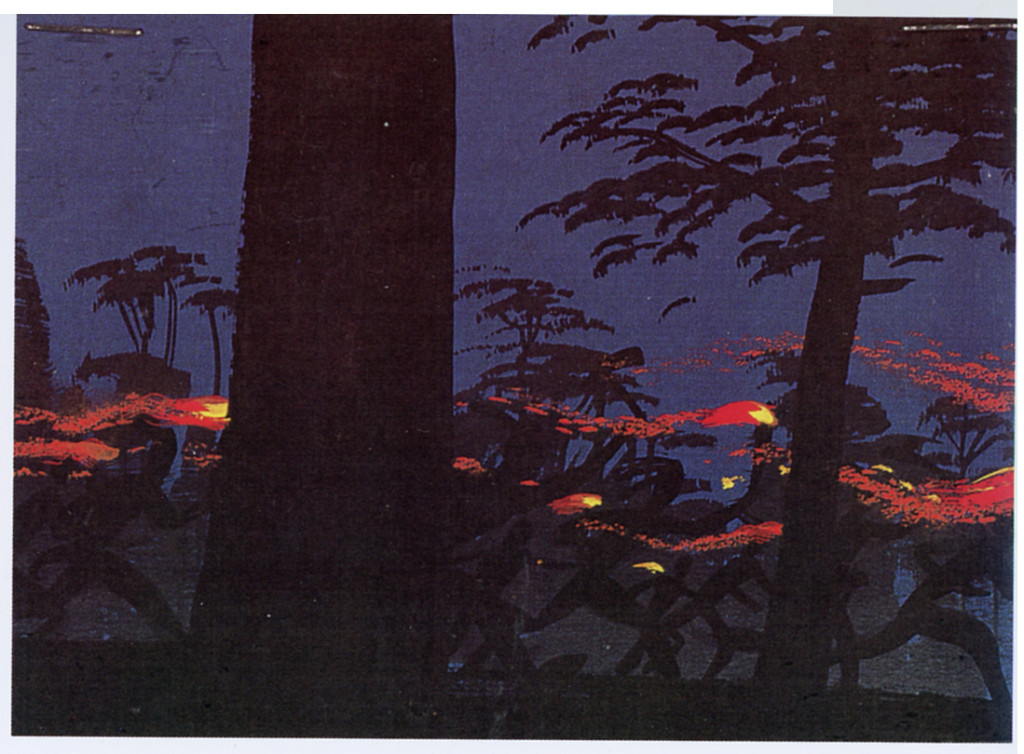
The art in these two pieces is often as touching as Eyvind Earle‘s majestic work for Sleeping Beauty. You can see how some slight grace and a more assured pen would have brought the backgrounds to Pocahontas closer to Sleeping Beauty.
They certainly had artists of character working for Disney back then (as do they do today; it’s just that today everyone seems to smell of fear. You also have to know how to keep the beauty of the art from dissipating after a few shallow and solo comments.
Animation &Animation Artifacts &Commentary &commercial animation &SpornFilms &Tissa David 26 Aug 2013 08:54 am
Garbo Talks through Tissa’s Drawings
To celebrate Tissa David‘s last days, Ive chosen this title sequence she did for Garbo Talks. Her anmation is beautiful for it, and I enjoy looking at the film which has yet to be released on DVD.
The initial rough/cut screening for Garbo Talks was a bit peculiar. I sat down and a woman sat next to me; I sort of recognized her. We said hello when she sat down. Somewhere midway during the film I realized who the woman was – Betty Comden, that half of the Comden & Green writing team. I realized she was playing the part of the older Greta Garbo in the film, without receiving credit. It was brilliant casting, but you could say that about all of Sidney Lumet’s movies.
When I left the screening room there was a tense meeting going on with four people. I caught Sidney’s eye and waved goodbye. Going down in the elevator Burtt Harris, the producer, rushed in as the doors were closing. He asked what I thought of the film. Before I answered he said it wasn’t working, and Elliott Kastner and MGM weren’t very happy. A rough conversation in an elevator.
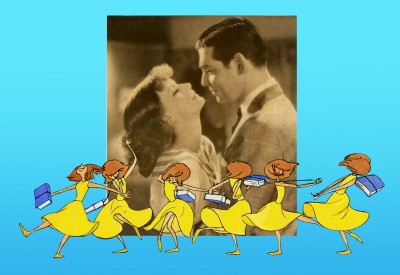
The next day, Sidney asked what I thought of the film, I said that I felt we didn’t know enough of the back story of the Ann Bancroft character in the film. I suggested that I try to offer this in the opening credit sequence. Sidney loved the idea. He just made me promise that it wouldn’t feel like the credits to “I Love Lucy” or “I Dream of Jeannie.”
During the mix, we were talking about the music for Garbo Talks when we slipped off into discussing the music for some of Sidney’s other films. I told him that the music by Richard Rodney Bennet for Murder on the Orient Express was one of the most brilliant film scores ever done. Sidney hesitated in responding finally saying he didn’t get it at first, and it took a while for him to appreciate the music for that film. Sidney wasn’t always perfect in selecting a composer for his films, although I do think that Johnny Mandel was a great choice for him on Deathtrap and The Verdict (or any film, actually).
Bob James had scored Garbo Talks. (He is an eminent jazz pianist, whose most famous piece is probably the theme to the tv show, Taxi.) Bob and I had to work together very closely. He wrote the score to the animatic I’d given him and would build the rest of the film’s score from that. He hit many of the actions in that opening title, and Tissa David‘s animation hit them all. There was a very tight sync between music and title animation.
The preview screening was held on Long Island. I drove there and met the group of Sidney, editors and MGM execs, including Elliott Kastner. He was the leading producer on the film. They weren’t happy at the end of the screening, and I was sure my titles were going to go. It took a week to hear that the titles were staying, but the score by Bob James was dropped. The composer took the hit, unfairly. A new score was being written by Cy Coleman. All that tight sync work!
Coleman wrote a lovely melody for the film, but just swept across the animation not hitting any points in particular. It’s taken me a long time, but I’ve come to like the music he wrote. Tissa wouldn’t watch the piece again with the new music.
In the film, the character played by Ann Bancroft has had a life that, in some small way, was shaped by Greta Garbo’s feature films. This is a small bit of backstory in the live action film, until the end.
For the credits, I chose to develop this aspect of her story, and Sidney agreed on the approach. We told her life in a caricature of Ann Bancroft‘s character, growing up. The sequence ends with her at her current age, an elderly woman, and the live action begins. Hence, we were giving the life story of the film’s lead character before the film started.
The idea was to use the device that had been developed for TV in the 50′s & 60′s of the caricatured characters whisking through the sitcom titles. (See Bewitched or The Carol Burnett Show.) However, it was our intent to treat it in a serious way.
Tissa David did a stunning, tour de force of a brilliant piece of animation. It was a dance that the character went through, and the credits played off the animation, which played off stills of Greta Garbo’s films.
There was a small crew on the piece, which ran about 2 ½ minutes. Tissa animated, I did whatever clean up was left. Robert Marianetti single-handedly colored everything; Janet Benn and Christine O’Neill did additional I&P. Gary Becker filmed it, and Edith Hustead edited.
.
.
Tissa had about two weeks to animate about 2½ mins. of animation. I begged her to leave inbetweens for me, which she did, though only on close positions. I inked on paper, and Robert Marianetti colored directly from these rough-ish drawings. It was done with prismacolor pencils on paper. The paper drawings were then cut out and pasted to cels.
.
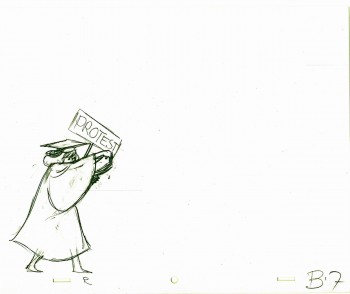 7
7
(Click any image to enlarge.)
Below is a rough PT of the piece with its staccato rhythm since it’s missing inbetweens.
Garbo Talks ruff PT On twos at 24FPS
Click left side of the black bar to play.
Right side to watch single frame.
The entire title sequence.
Thanks to Roger79 for uploading it.
Thanks to Stephen MacQuignon for finding it.
Animation &Animation Artifacts &Chuck Jones 24 Aug 2013 05:05 am
Heromakers
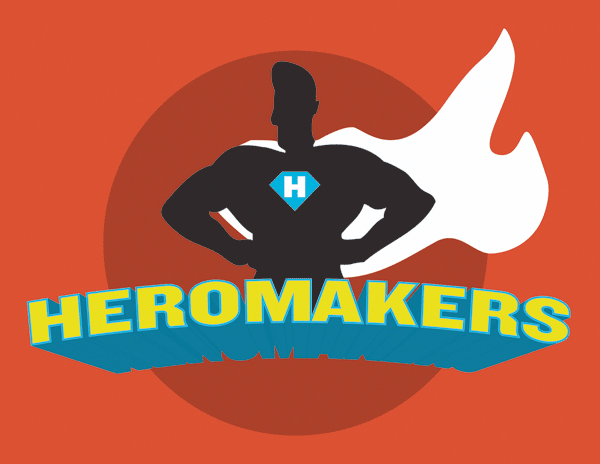
Heromakers Featurette Released
__________________________
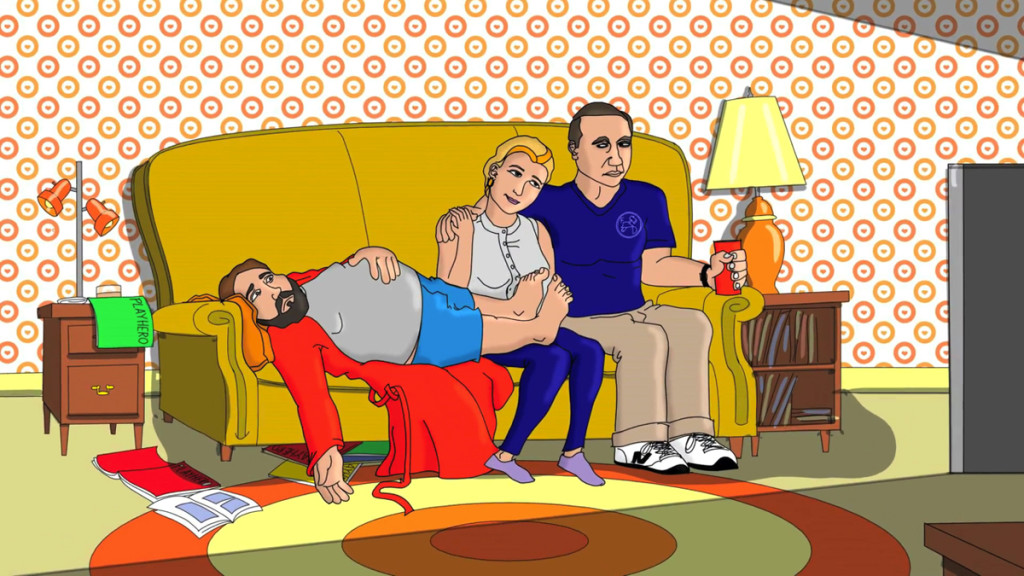 With the help of the Buzzco Associates animation team, Dan Hirshon and Jay Nog, have produced a featurette to help promote their animated sitcom, Heromakers.
With the help of the Buzzco Associates animation team, Dan Hirshon and Jay Nog, have produced a featurette to help promote their animated sitcom, Heromakers. 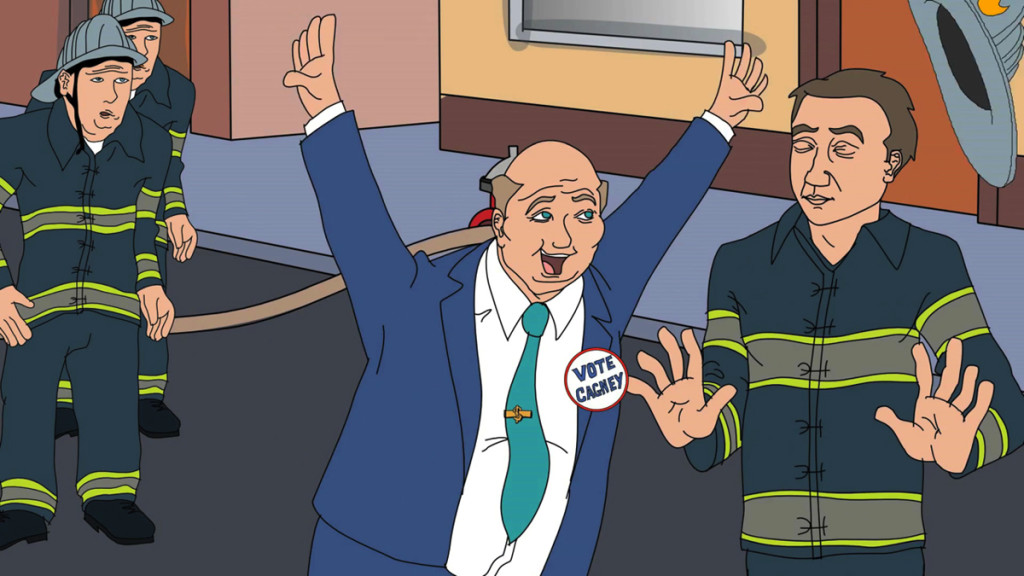
The “Simpsons meets X-Men” comedy series revolves around the dysfunctional Murray Family and
their business that offers human clients the opportunity to experience the life of a superhero.
Hirshon and Nog, both veterans in standup and sketch comedy, decided to take a sketch idea from their group, Grandma’s Favorite, and transform it into a television series. One year and many drafts later they were ready for production. They had no problem securing a talented voice-over cast, character illustrator, and sound designer/re-recording mixer, but finding the right animation team was a much more involved process. “We weren’t just looking for skilled animators. We wanted someone who was also enthusiastic about the project and related to our sense of humor,” says Nog. 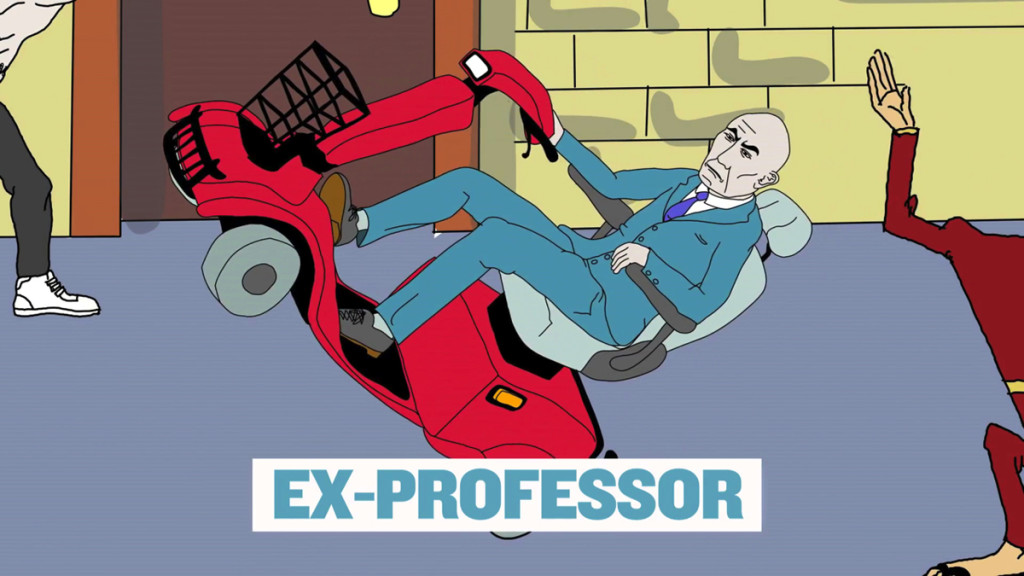
After several weeks of searching they found what they wanted in Candy Kugel, Rick Broas, and Marilyn Kraemer at Buzzco Associates, Inc. “From the first frame of the first animatic we knew we were in good hands. Everything we’d imagined and more was coming to life,” says Hirshon, “and it didn’t hurt that Candy baked us some pretty sweet brownies.” Heromakers takes place in Champion City, where Mayor Cagney’s environmental negligence has led to mutation in some citizens. To avoid public outcry, Cagney dubs the mutants “superheroes” and goes so far as to replace the fire department, with what he labels “The Super Hero Intelligence Team” (THE S.H.I.T.).
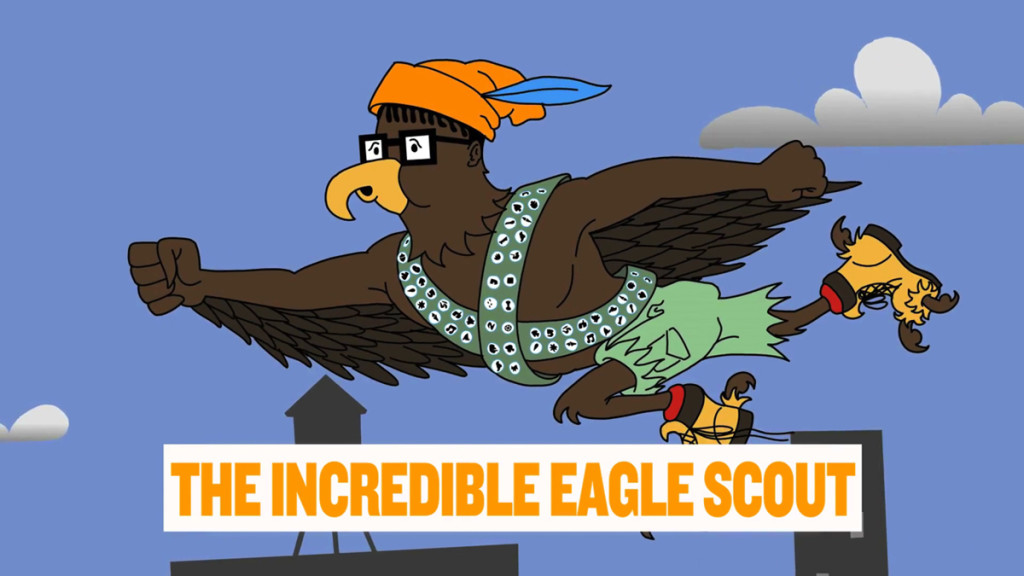
Newly unemployed firefighter, Larry Murray, and his family, decide to bring heroic values back to Champion City with their not infallible business, Heromakers. Larry supervises the client “heroes.”
His wife, Denise, acts as head of promotions. Uncle Bill designs the costumes. And their son, Tim, designs everything from rocket packs to body armor to assist in their clients’ missions.
However, what no one realizes is that Tim is powering the inventions via his secret telekinetic powers. If Larry finds out that his son is a mutant, the business may be doomed.
There’s an extended clip giving more about the Heromakers’ story, characters, cast, and crew at www.Heromakers.net.
